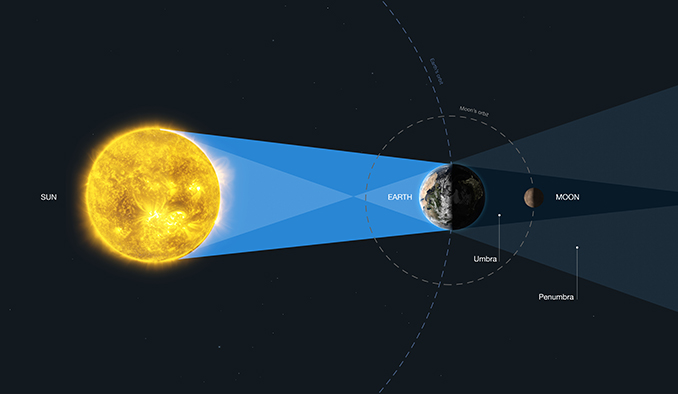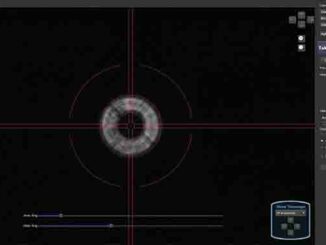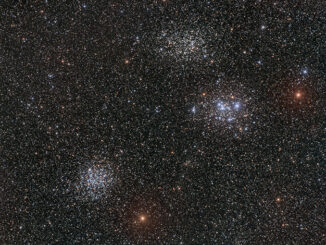
On the 15/16 May (Sunday into Monday) there’s a total eclipse of the Moon visible primarily in the Western Hemisphere, with UK observers catching just the start of totality as the Moon is very close to setting. South America and the eastern half of North America are in prime position at this eclipse, with the whole of the eclipse being visible.

An eclipse of the Moon occurs when our satellite moves into Earth’s shadow, when Earth lies between the Sun and the Moon. Normally, this alignment causes a full Moon to be seen in the sky, and the Moon is fully illuminated. Because the Moon’s orbital plane is inclined to ecliptic (the apparent path of the Sun in the sky) by around five degrees, the Moon doesn’t encounter the cone of Earth’s shadow that frequently.
At this eclipse, the Moon lies fully within the umbra, the deepest part of the shadow cone and we experience the glory of a total eclipse of the Moon, with penumbral and partial phases bookending totality.

UK misses out on best of totality
The eclipse begins at 01:32 UT on 13 May and ends at 06:50 UT. Across the UK, the Moon lies low in the south-south-western sky as the eclipse gets underway. Owing to this unfavourable altitude and a lack of true astronomical darkness as this time, we can probably rule out seeing any trace of the very subtle penumbral phase, when Moon lies in the fainter part of the shadow cone.
The partial phase of the eclipse begin at 3.27am BST (02:27 UT), when the Moon enters the umbral shadow. An increasingly large bite is taken out of the Moon’s eastern side as the Earth’s curved shadow creeps inexorably across the lunar surface. You’ll need to observe from across an uninterrupted south-western horizon as the Moon lies at an altitude of between just 13.5 degrees (at Plymouth) and 8.5 degrees (Edinburgh).
Totality begins at 4.29am BST (03:29 UT), with Moon barely above the horizon and just minutes before setting. An important factor to consider is that when totality starts the sky is quite bright, with civil twilight, to contend with (sunrise is around 35 minutes away). When added to the murky conditions often seen close to the horizon, the Moon could be very tough to spot at all. In Plymouth, the Moon is seven degrees high at the beginning of totality.
It’ll still be worth trying to image the partial phases of the eclipse, even totality. With the Moon hovering low over the horizon, some spectacular and atmospheric shots could be captured.

Better prospects across the pond
Prospects for viewing the eclipse are much better for observers in the United States of America, Canada and South America. In the USA, from roughly the mid-west eastwards, totality and the partial phases before and after are visible in their entirety. From New York City the partial phase begins on 15 May at 10.27pm EDT, with totality taking over from 11.29pm to 12.54am on 16 May. In Los Angeles, mid-eclipse on 15 May at 9.11pm PDT (04:11 UT on 16 May) sees the Moon 15 degrees high over the south-eastern horizon. Across the whole of the South America continent, all phases of the eclipse can be observed.




